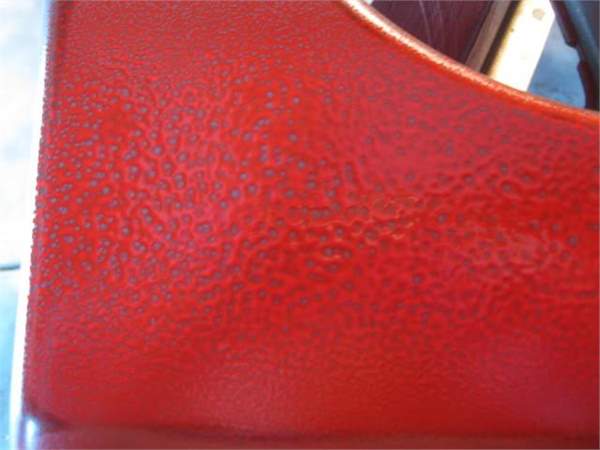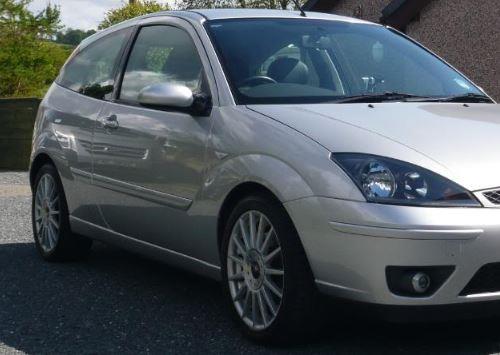Automotive Spray Paint:
Up until last week I had two preconceptions about spray painting with automotive spray paint cans and they were: 1: Aerosols give a poor, patchy and dull finish ad the colours never match. 2: Painting any part of my car, especially with a spray can is something best left to the professionals That was until our friendly Holts supplier dropped by to give us the full low-down on how to use the Holts Paint Match Pro range of spray paints. The Holts range includes over 300 different spray paint colours that are an exact match to your car's colour code. The range consists of metallic spray paint, non-metallic spray paint and and associated primers and lacquers.
Dispelling the Myth:
There was good reason for my preconceptions because I've painted quite a few parts of cars myself over the years using spray cans and to be honest the results were a bit disappointing. I've had a range of poor outcomes such as orange peel effect, paint runs, cracking and even these weird spots that the paint wouldn't cover. What I discovered this week was that (perhaps unsurprisingly) it was the man, not the machinery that was at fault! Basically, I had been breaking all the rules! With a few simple guidelines and a good dose of patience, I managed to achieve a near perfect finish and an exact colour match. Here's how I did it:
Preparation:
Two things are absolutely essential for a perfect paint finish, preparation and patience. (the latter I tend to lack!) For this demo I chose a wing mirror to paint as it is one of the most commonly replaced parts that require painting before fitting. If possible, take the part you want to paint off the car - it's easier to spray downwards onto a part than it is to try and do it while it's attached to the car (and there will be less masking off to do). The paint will also be less likely to run if the part is lying down flat on your work surface.
If possible, take the part you want to paint off the car - it's easier to spray downwards onto a part than it is to try and do it while it's attached to the car (and there will be less masking off to do). The paint will also be less likely to run if the part is lying down flat on your work surface.
Banish the Silicone!
Get rid of any silicone based products out of the area you are painting in. Car care products such as Son Of A Gun and certain polishes and waxes contain silicone and can ruin a paint job by just being in the same room! (silicone was the cause of the weird spots I mentioned earlier)
Sand:
Inspect the surface you want to paint for any imperfections, run your fingers over the surface and see if you can feel anything. Use fine wet & dry sandpaper and water to remove imperfections. Before you apply any primer you need a perfectly smooth surface, don't be fooled into thinking the paint will cover up small scratches or marks - it won't!
Mask:
Mask everything off really well using masking tape and paper for larger areas. Paint can travel a long way so cover up more than you think is necessary. Lastly, wipe the surface you want to paint with a cleaning agent such as thinners or petrol. This will remove any oily residues (even the oils from your fingers can wreck a paint job)
Priming:
There are a number of different primers to choose from. White, grey, red oxide and plastic primer are some of the most common ones. In this instance, we will be using the plastic primer. Plastic primer is designed specifically for spray painting plastic products which have a certain degree of flexibility. Unlike standard primers, plastic primer actually flexes with the plastic underneath and stops the paint from cracking. To apply the primer you need to shake the can really well for a couple of minutes, ideally it should be at room temperature (leave the can in the house overnight before painting) Hold the can about 10-12 inches away from the product and spray a very light dusting of primer over the surface in a smooth, back and forth motion. You want to just cover the surface. Leave the part to dry for 5 or 10 minutes and then repeat, moving the part around and changing the direction to up and down. You want to apply a minimum of 5 or 6 fine layers of primer. If you can see any imperfections you can take the finest grade of wet & dry and sand them out and then re-apply another few layers of primer
Painting:
This is the satisfying part. The method of application is identical to priming, you want to build up layers rather than apply one thick, heavy layer. The most important point to mention here is the difference between metallic and flat paints. Metallic paints MUST be used in conjunction with a clear lacquer to achieve the correct glossy finish. A standard or flat paint colour doesn't need lacquer and is made up from at least 8 layers of paint. 
Lacquering:
Lacquer is only needed for metallic paints and is applied in exactly the same way as the primer and paint - lots of fine layers. A lacquer is there to provide gloss and protection to the paint underneath. So, as I mentioned above, the real key to a perfect finish is patience. If you're willing to put in the time, follow these simple guidelines and you can achieve a perfect finish at a fraction of the cost that a main dealer would charge, and don't forget, if you do make a mistake you can always sand it down and start again! Here's a photo of the finished article fitted back on to the car.
Specialist spray paints:
At MicksGarage we stock a wide range of specialist spray paints which are intended for automotive use but some are more commonly used for spray paint art and decoration. Popular products include:
- Chrome spray paint
- Gold spray paint
- Copper spray paint
- Fluorescent spray paint
- Very high-temperature spray paint
- Underseal spray paint
- Bumper and trim spray paint
- Kurust rust remover paint
For more DIY tips and 'How To' guides why not check out our
YouTube or take a look at the
Guides section of our blog. You'll find all sorts of handy info that could save you time and money maintaining your car.